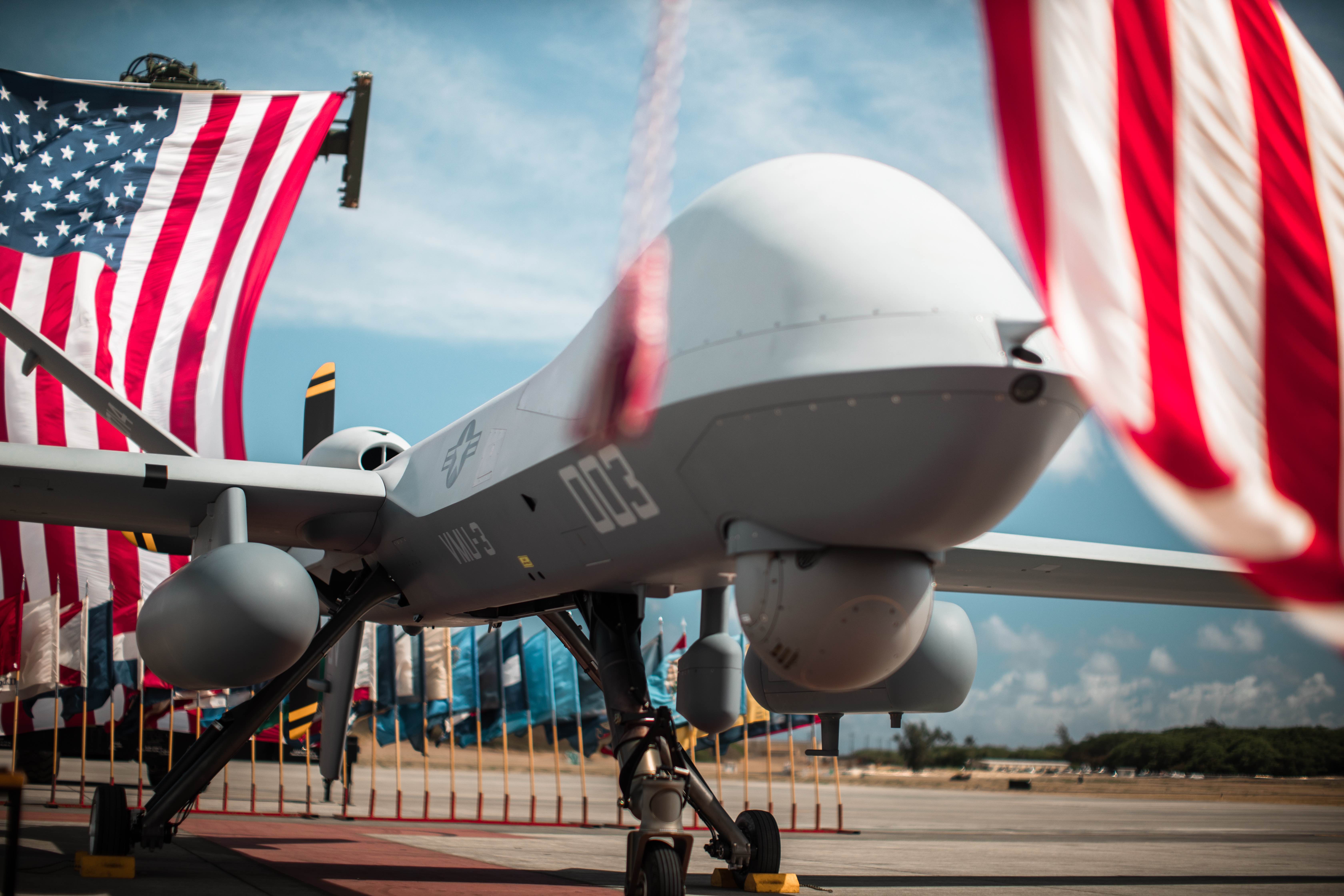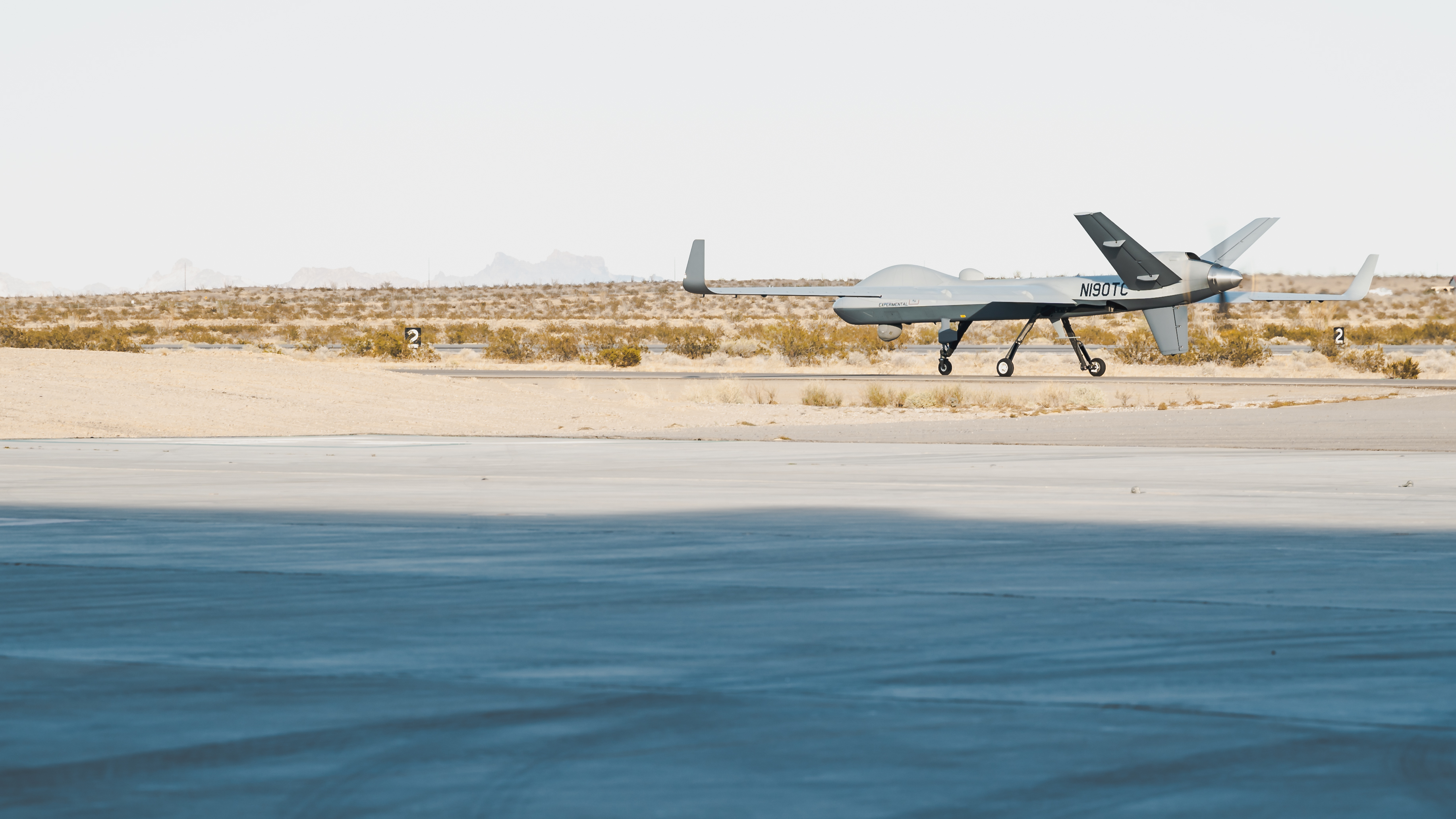
Marine Unmanned Aerial Vehicle Squadron 3 (VMU 3) introduced its new Reaper unmanned aerial vehicles in a ceremony at Marine Corps Air Station Kaneohe Bay, Hawaii, last week.
The Marine Corps UAV squadron, the only one of its kind in the Indo-Pacific, is the first VMU to achieve initial operational capability (IOC) of the service’s new MQ-9A Extended-Range Marine Air-Ground Task Force (MAGTF) Unmanned Expeditionary (MUX) Medium-Altitude, High-Endurance (MALE) aircraft. VMU-3 reached the milestone earlier than expected, with IOC being achieved in the third quarter of 2023 instead of the fourth. In April, the squadron received its first two Reapers and was certified to operate the unmanned aerial system by June.
VMU-3 previously operated smaller, less capable unmanned systems such as Boeing ScanEagle, Shadow, and Blackjack during Marine Corps operations in Iraq and Afghanistan. However, as the service shifts its focus toward the Pacific through its Force Design 2030, more capable and longer-ranged UAS were required to support new concepts and missions, the Marines have said.
“We will utilize these assets to devote comprehensive maritime domain awareness, serving as wayfinders for our combined and Joint Forces. VMU-3 is ready, and we are playing for keeps,” said Lt. Col. Nicholas Law, the commanding officer of VMU-3, in the ceremony’s press release.

Earlier this year, the 3d Marine Littoral Regiment tested its how it could use its new ISR tools in the Philippines during Balikatan 2023’s sinking exercise. The Marines practiced FD 2030 concepts, like Expeditionary Advanced Basing Operations, by providing targeting data to both Philippine and U.S. forces from a base south of Manila over 200 miles away from the exercise. One of the platforms feeding the MLR information of the exercise were Reapers from the California Air National Guard’s 163rd Attack Wing, according to the Marines.
While these UAVs were from the Air Force, the exercise showed the possibility of the platform. Col. William G. Heiken, commanding officer of Marine Aircraft Group 24, described the Reapers as a “game-changing capability” for both the service and the joint force during the ceremony.
“It will serve as the airborne quarterback for littoral maneuver elements from the 3rd Marine Littoral Regiment,” Heiken said.
According to the Marine Corps 2022 Aviation Plan, MUX HALE will support the force with Tier 1 Operational Capabilities. Alongside intelligence, surveillance and reconnaissance, the service also plans to have a capability on their Reapers, which transforms the UAVs into relay nodes for forces to communicate and receive information. Further Tier 1 Capabilities between 2022-2026 include electronic warfare and airborne early warning radar. Future missions for the Reapers are being explored, such as offensive air support and tactical transportation.
India, Japan, and Taiwan have ordered Reapers to enhance their own maritime domain awareness capabilities as tensions increase throughout their respective regions.
The Marine Corps will field a total of 18 Reapers between two active and one reserve squadron by 2025. Future plans are considering doubling the service’s MUX MALE capacity with the addition of three active squadrons to further support FD 2030 goals.
The inclusion of the Reaper into the Marine Corps follows the 2020 cancelation of the MUX program that was designed to develop a shipborne UAV for use by Marine Expeditionary Units underway.
Going forward, VMU-3 will continue to experiment with MQ-9As and further refine the service’s operating concepts.
“We’re never satisfied, and we have more to do,” said Law.





